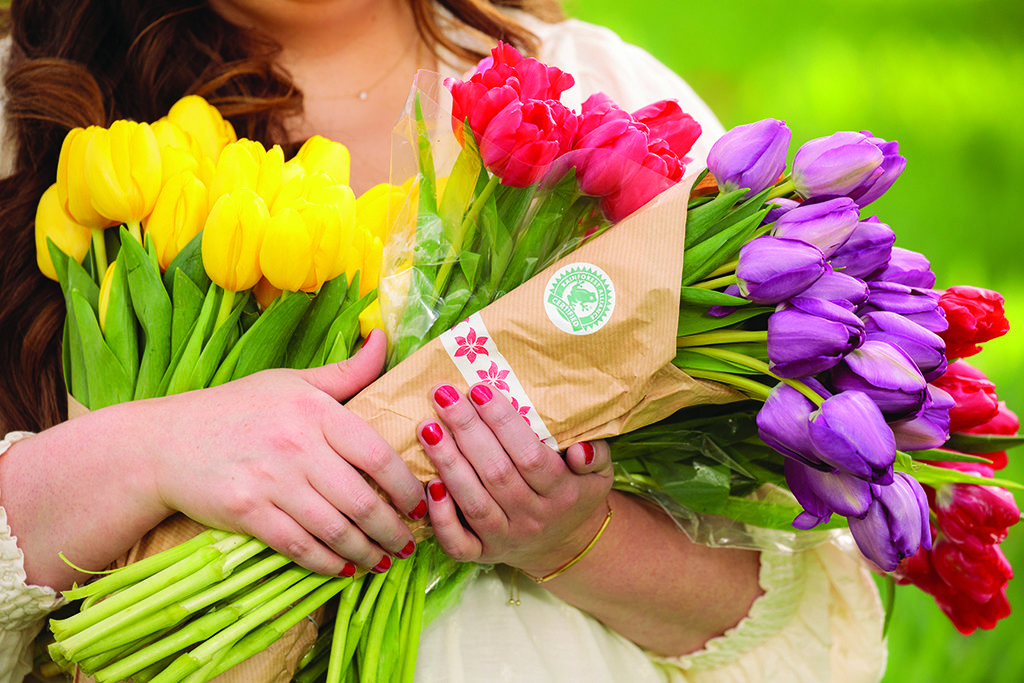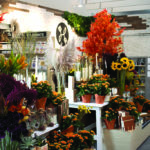
The latest issue of Floral Management helps readers understand the many “green” certifications they may see on flower sleeves, such as the Rainforest Alliance seal on this bouquet of tulips grown by Sun Valley Floral Farms in Arcata, California.
You want to offer your customers sustainably grown flowers. How do you go about it? In the latest issue of Floral Management, contributing author Bruce Wright reports on making sense of the many “green” certification labels and a few companies that help connect like-minded growers and retailers.
Around the world, there are at least a dozen green labels — some based in a country of origin; some that group flowers with other agricultural products. “With their differing strengths and priorities, each of the major certification programs has something valuable to contribute,” Wright writes. “For buyers, however, the labels can seem to compete.”
To cut through the confusion, an international nonprofit, The Floriculture Sustainability Initiative, is working to create a shared vision of sustainability. Founded in 2013 by 18 stakeholders in the floriculture sector, FSI currently has 75 stakeholders representing interests all along the supply chain, including several well-known green labels and major U.S.-based companies such as Ball Horticultural Company, Metrolina Greenhouses and Smithers Oasis. Their goal: have 90 percent of all flowers and plants responsibly produced and traded by the year 2025.
“Standards owners have become more open with their data sharing,” says Jeroen Oudheusden, executive officer for FSI. “Traceability has increased. The whole supply chain has become more transparent.”
Meanwhile, retail and wholesale florists can work with companies that facilitate direct buying with sustainable flower farms. Among them: FloraLink, Tradewinds International, and Fresh-o-Fair.
Learn more about these companies in the Up the Supply Chain column in the March/April issue of Floral Management.
Katie Vincent is a senior contributing editor for the Society of American Florists.

